The pandemic has limited access to the garden for many members of our community. In response, we have put together this guided — and a little opinionated — photo-tour with some insights into the garden from its designer Mayita Dinos.
Arlington Garden was designed as a series of interconnected garden “rooms” showcasing mediterranean-climate plants and sustainable gardening techniques.
Its layout is intentionally labyrinthine. Secret chambers of flowers flicker into view between agaves, appearing unexpectedly behind switchbacks in garden trails. This layout makes it possible, says the garden’s designer Mayita Dinos, to wander and “imagine you are not even in a garden but rather … in a field or a nook in a forest.”
THE ENTRANCE
The edge of the garden is permeable to the outside world: there is no significant fence and the planted borders are dotted with entries. The official main entrance (labeled “1” on the map) is on Arlington Drive and splits immediately into two paths.
Feeling reflective, a visitor may pause to consider which path to take.
A straight gravel path leads around a fountain and into the formal Olive Alee.
A less formal path, hidden on the right, disappears down the slope.
The contrasting paths at the entrance are reflected in the structure of the garden itself. The western half of the garden is landscaped into terraces and a formal allee with Olive trees. The plants here are largely from the Mediterranean basin. The eastern half of the garden, in contrast, reflects the natural landscape and flora of Southern California.
Mayita’s Highlights
The Plane trees planted at the entrance are reflected by the native Sycamore trees in the California section down the slope. Both are in the same genus (Platanus) but evolved in similar ecosystems separated by an ocean!
Other species planted along the path include Myrtle, Rock Rose, Boxwood, and Rosemary, which are all iconic Mediterranean species. Through sight and smell, they invite visitors to explore the mediterranean theme of the garden.
Suppose we take the less-traveled path down the slope, then we see in succession:
THE DESERT GARDEN
Photo credit friend-of-the-garden Yvonne Savio.
Passing small Australian and South African gardens, we arrive at a desert garden planted with unusual xerophytes, including Malagasy Pachypodiums and Mexican Agaves.
Mayita’s Highlights
Thomas Juhasv was responsible for planting this garden of desert species. Thomas wanted to include many Baja California species because, as climate change progresses, the future climate in Los Angeles will look more like that of present-day Baja California. This garden is intended to help us all prepare!
BETTY MCKENNEY’S MEMORIAL BENCH
Proceeding further down the path, we see a memorial bench dedicated by the volunteers to Betty McKenney, one of the garden’s founders. This was one of Betty’s favorite spots to sit, because it afforded a view of the distant mountains.
THE POMEGRANATE AMPHITHEATER
Appearing unexpectedly around a bend to the left, we see the Pomegranate Amphitheater (labeled “6” on the map). The amphitheater’s lattice bonnet was built by the artist and inventor Ray Cirino, and the stained glass picturing a pomegranate was fabricated by Janet and Rafael Calvo of Tico Tech. It was built in honor of Garden supporter Sabra Clark.
The benches in the Amphitheater are built from split concrete urbanite and sandstone recovered from the Durand House mansion that once stood on the site. You can still see an Acanthus spinosus leaf ornament on one sandstone block, which was a popular motif in Ancient Greece, reused in different ways in the following centuries.
Mayita’s Highlights
In the early days of the garden, people were donating all sorts of things to the garden. One day, Betty walked into the garden and just found all these ornate columns! I decided to put them to use in the Pomegranate Amphitheater.
The original design had called for a metal lattice structure that made you feel like you were looking out from inside a pomegranate. This isn’t something that we were able to build, but with the help of Janet and Rafael Calvo, we managed to create a beautiful pomegranate element that riffed on my original idea.
WETLAND AREA
Proceeding down the slope, we walk through a seasonal wash bordered by coastal sage scrub, eventually ending up at a vernal pool (labeled “9” on the map) at the very bottom of the hill. Vernal pools are seasonal bodies of water fed by rain and populated by plants and animals often restricted to such pools. Rainwater from the top of the garden eventually ends up in this pool, guided here by carefully positioned berms and channels.
Mayita’s Highlights
Thomas was also very helpful in selecting plants endemic to these plant communities. Originally, we had several kinds of juncus and native willows in this area. All the things planted here basically just suck up water, the way bread sops up gravy!
The vernal pool was dug out as a kind of shallow depression. By pure coincidence, there was an underground stream in this area, so it ended up being the perfect place for it.
Adjacent to the vernal pool is a footbridge. A glance underneath reveals an unexpected denizen.
ORANGE GROVE
Turning north, the edge of the orange grove comes into view on the right (“10” on the map). With the help of volunteers, oranges from this grove are harvested every winter for Arlington Garden’s sweet marmalade. This past year, over 3100 pounds of oranges were harvested with fifty boxes going to local charities.
Mayita’s Highlights
The orange trees in the grove come from an artist in Pasadena who had staged an art installation using Washington Navel Oranges. They were growing in tiny one-gallon pots, and he used the pots to trace the outline of a building – I think it was a settler’s cabin. When the installation was removed, we inherited the art-piece oranges!
THE LABYRINTH
We have reached the end of our tour. Just ahead lies a simple labyrinth under a Peruvian (or Californian) Pepper Tree, one of the beautiful old trees that lived on the lot before the creation of the garden. The path we took to get here is reflected in this maze, an anachronistic Theseus walking the labyrinth walks the garden in miniature.
Mayita’s Highlights
This labyrinth was one of Betty’s dreams. The design is a classical pattern, but the construction is not. The labyrinth was built by local high school students of Mayfield Senior School using small, natural stones. I had envisioned something almost completely different, using broken concrete sunk into the ground. But this nearly ephemeral labyrinth is beautiful, and visitors have respected it. It has become one of my favorite places in the garden!

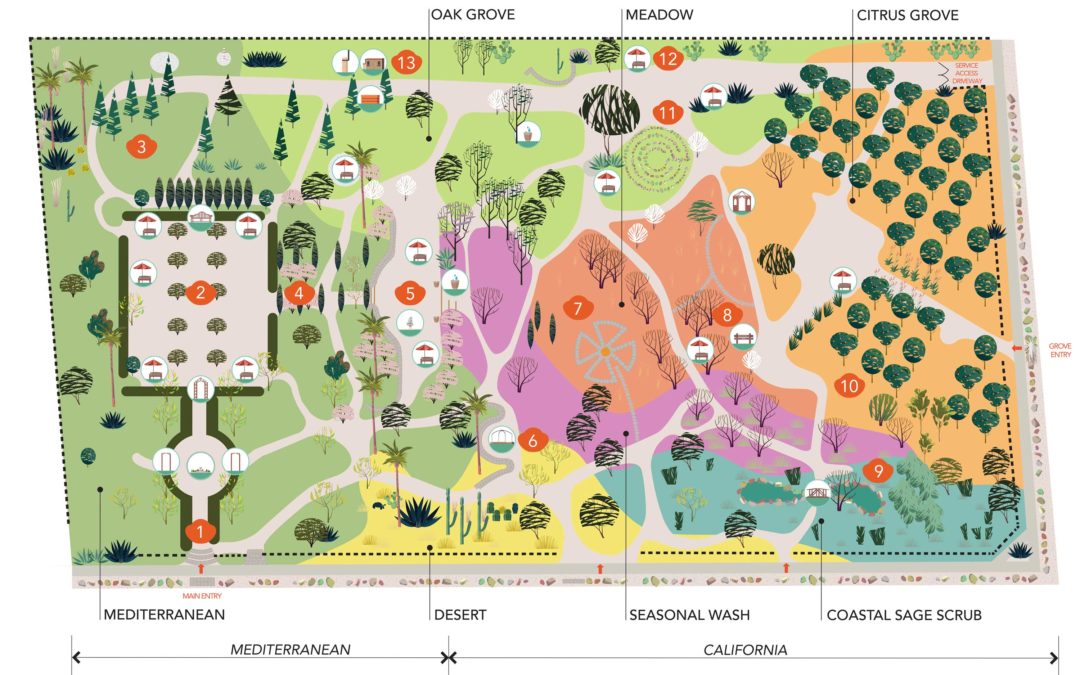
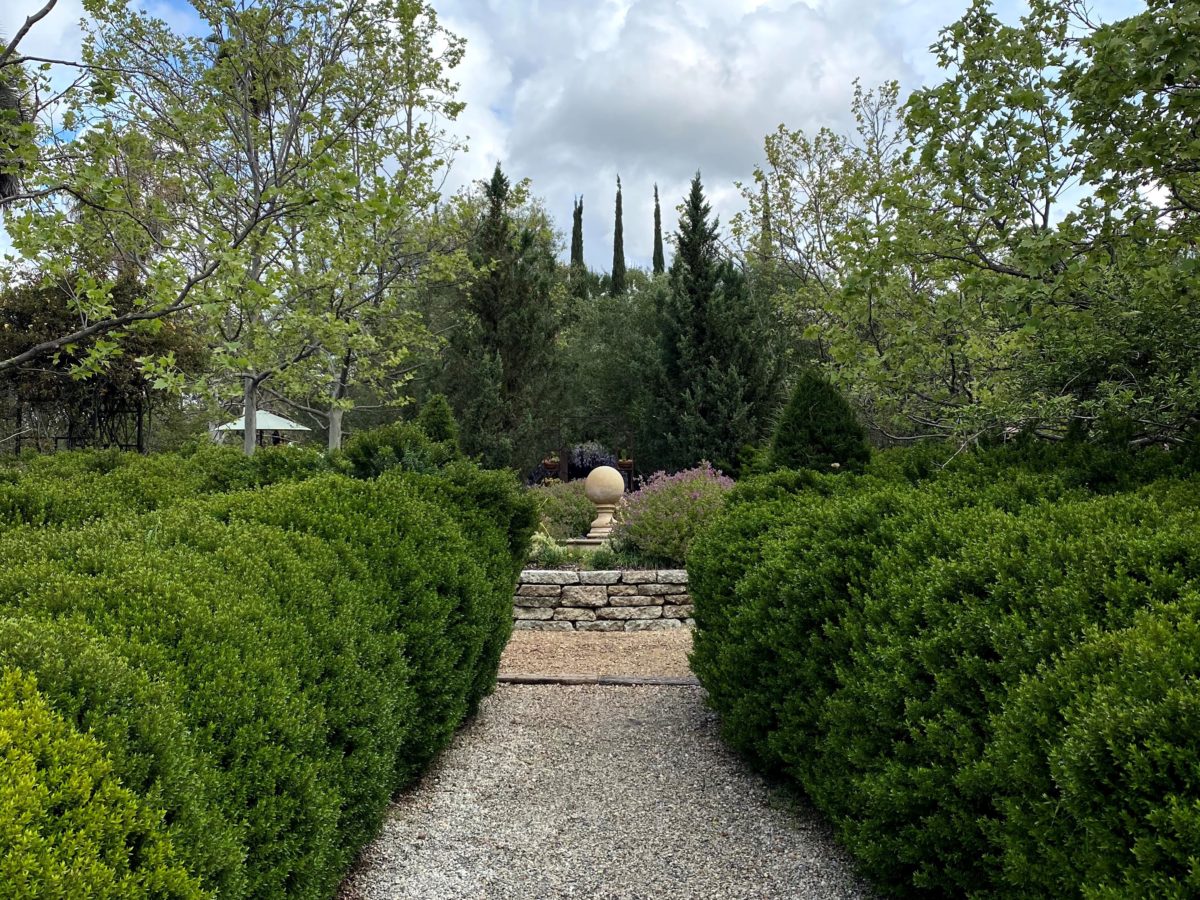
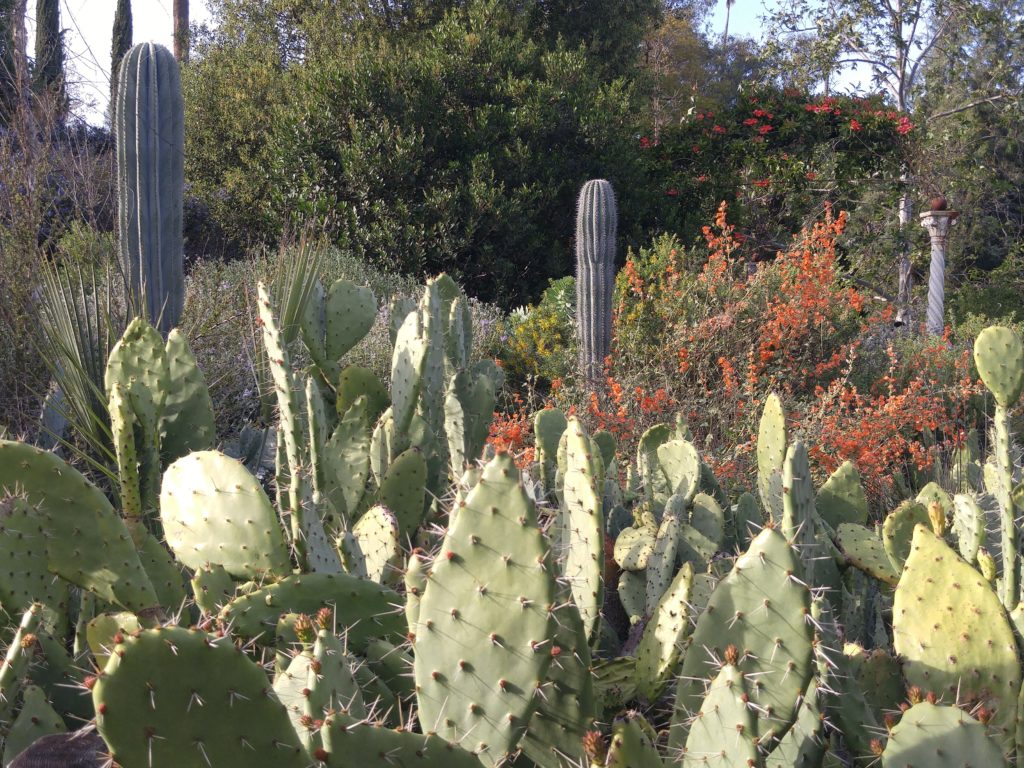
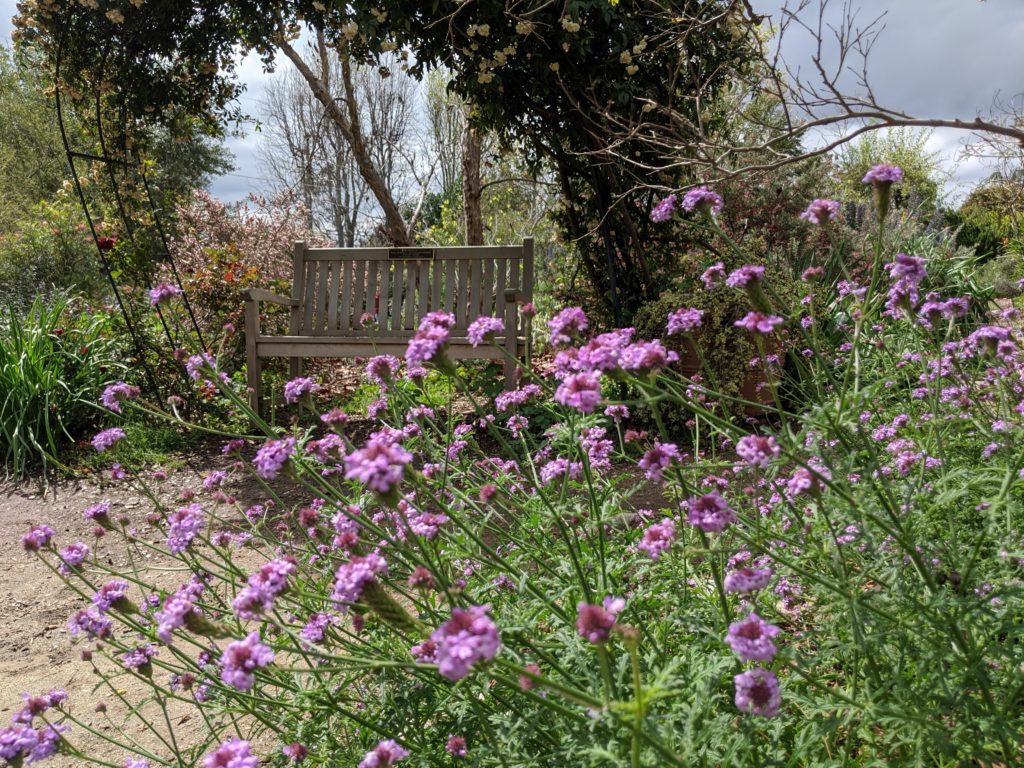
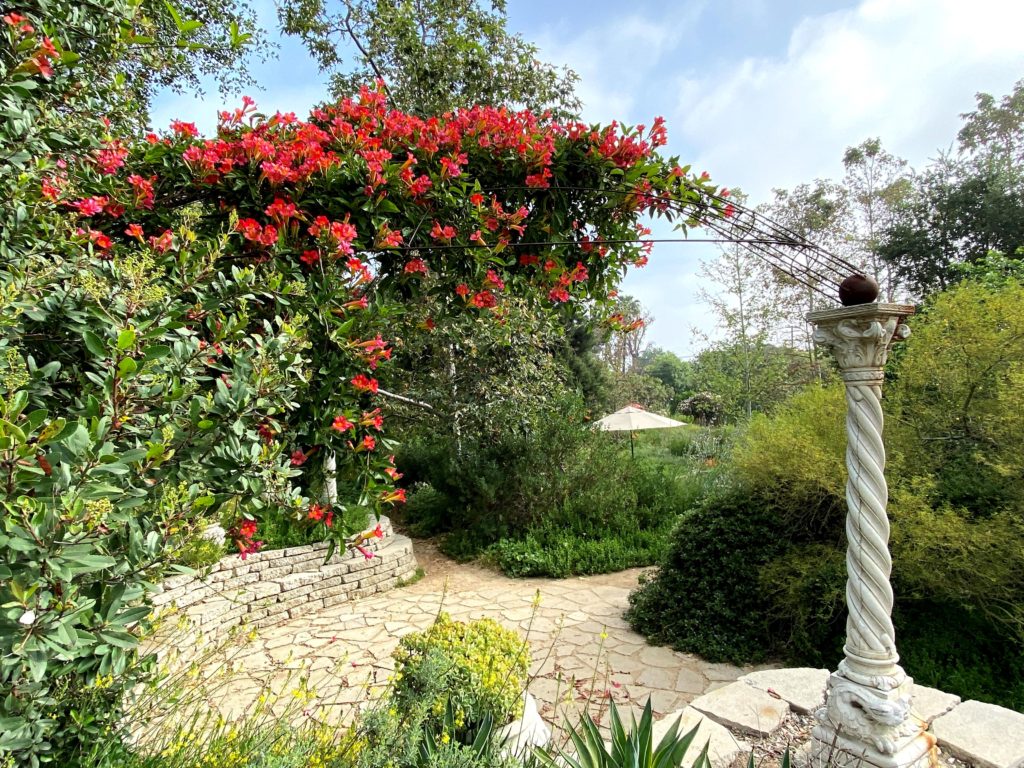
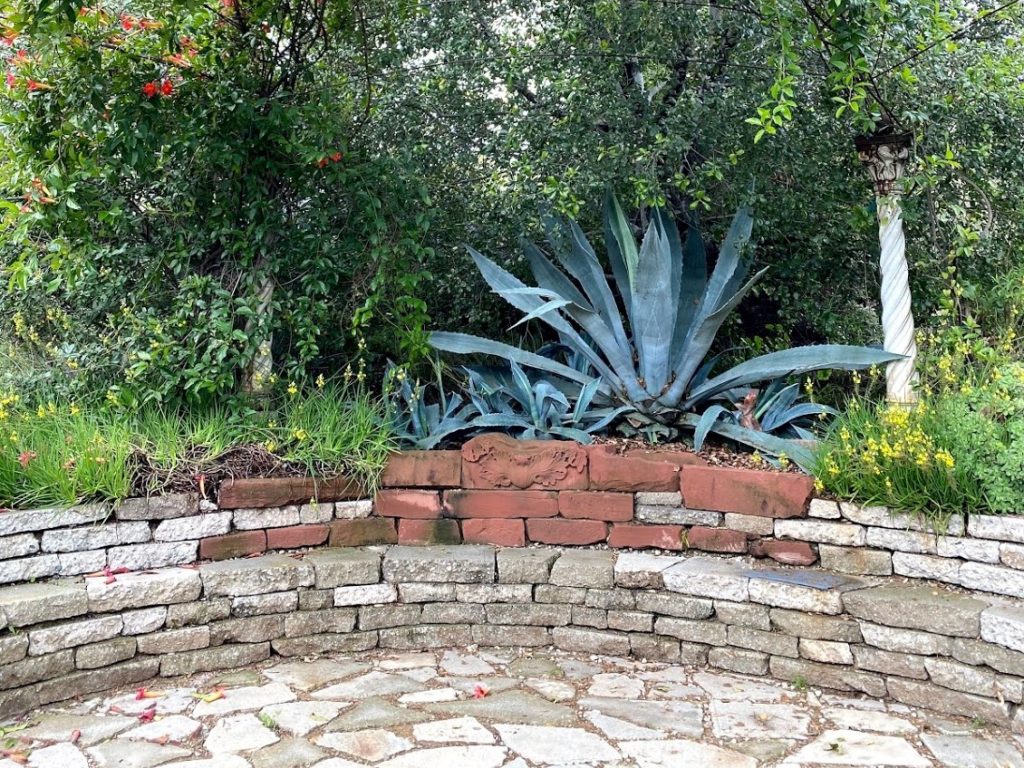
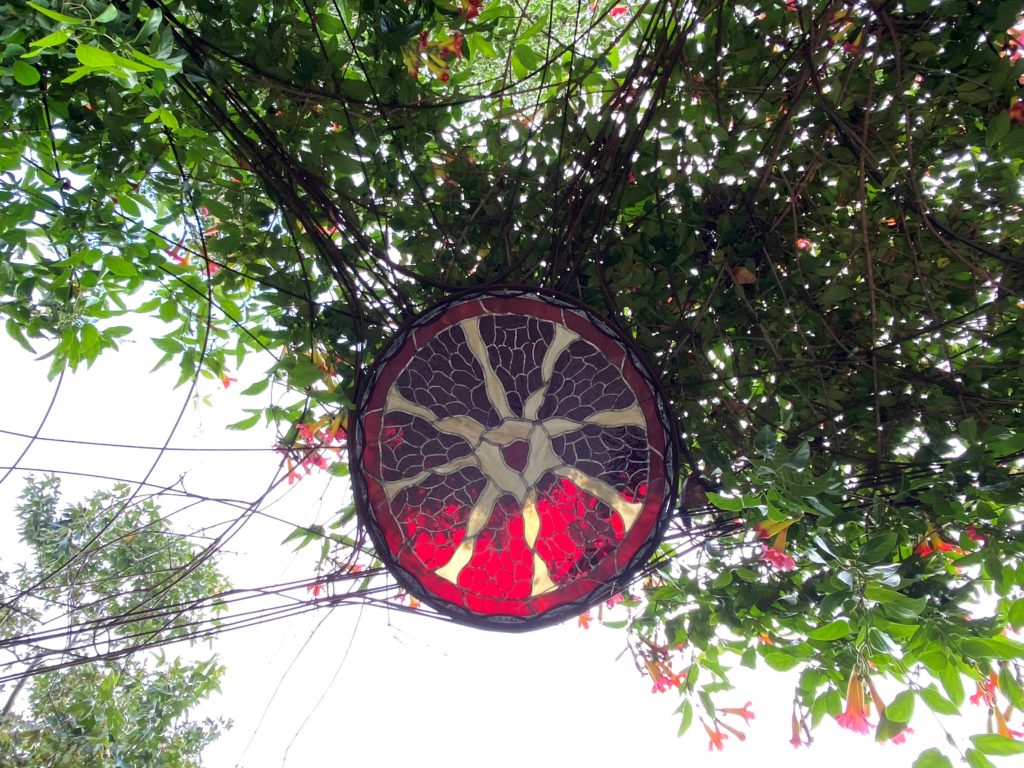
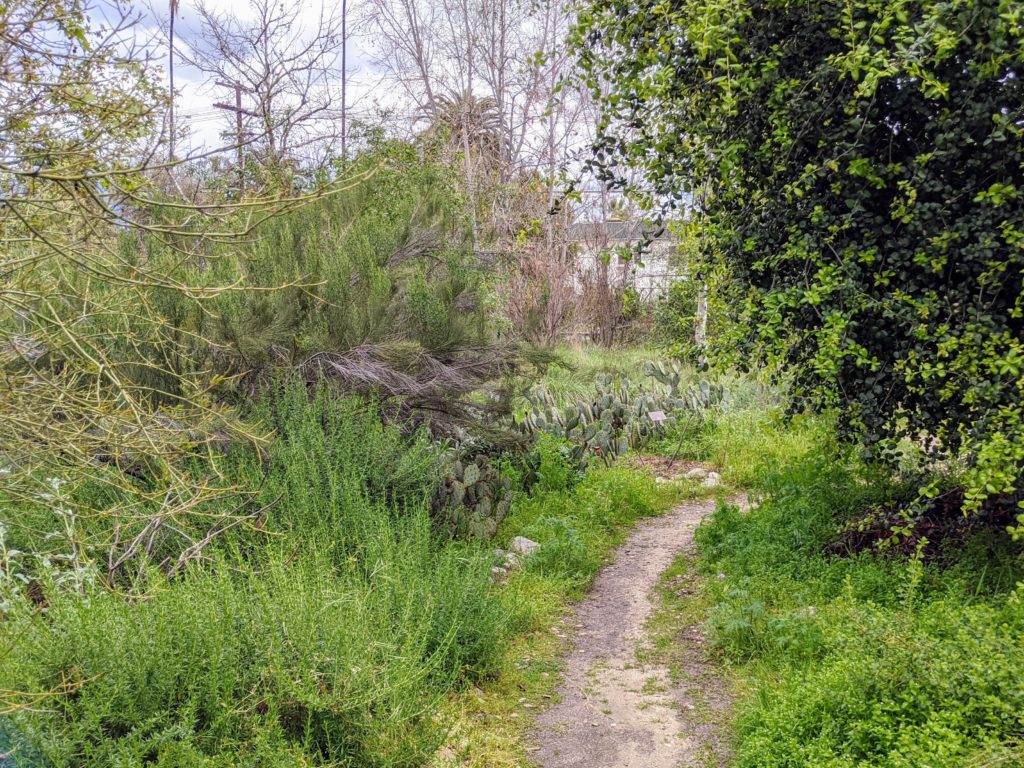
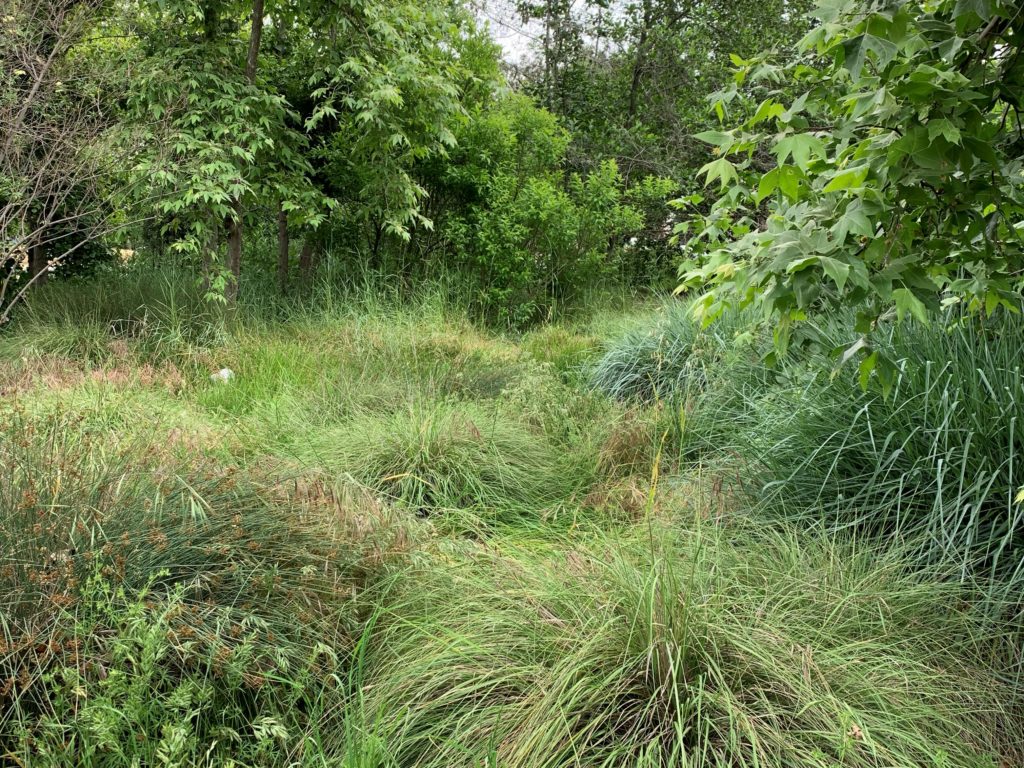
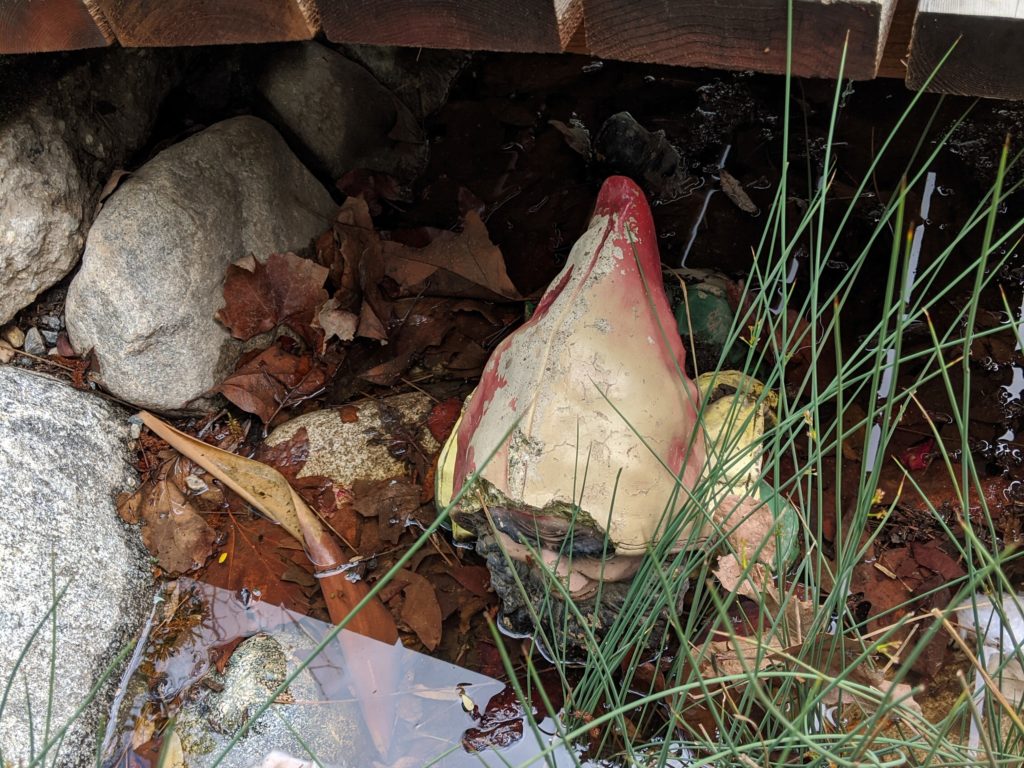
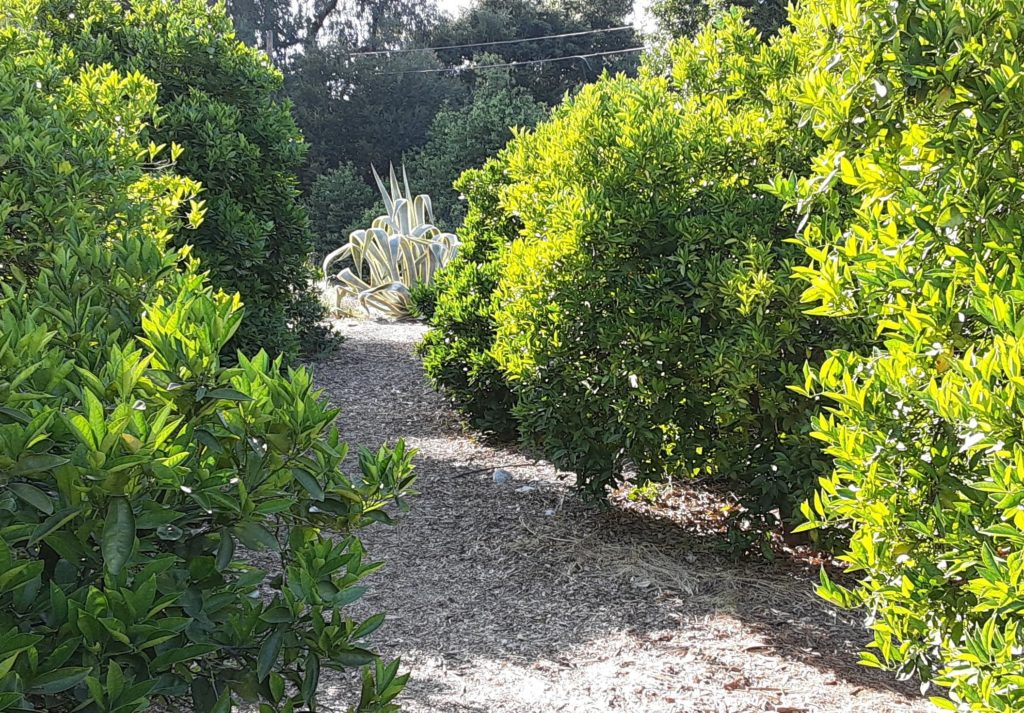
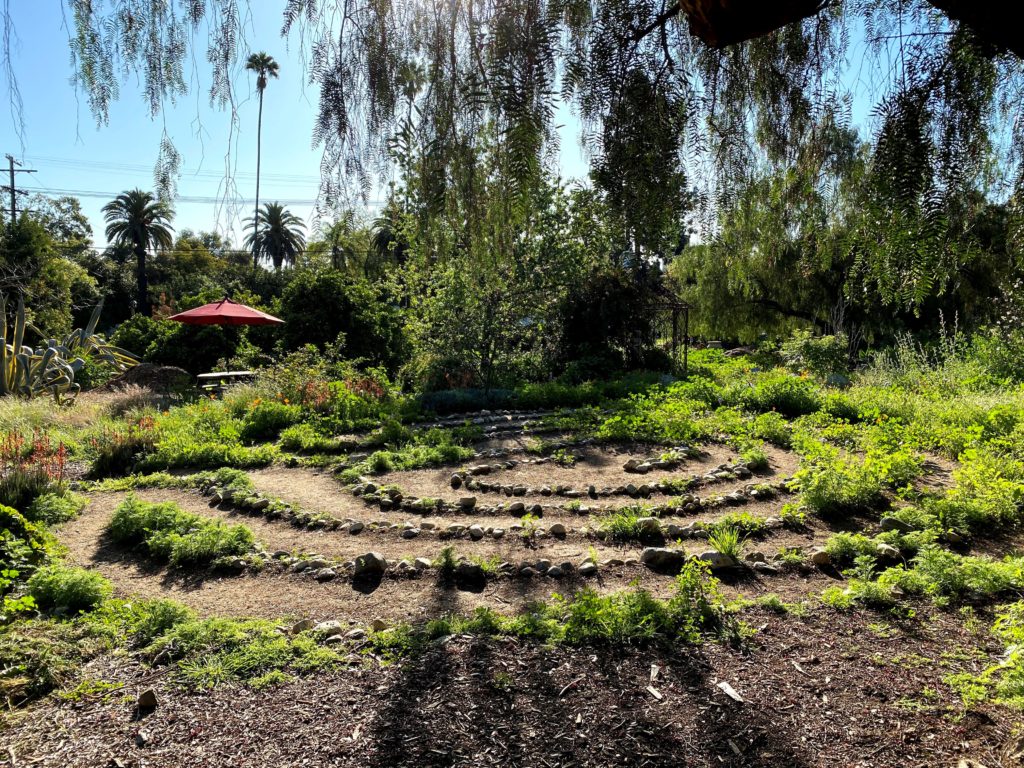

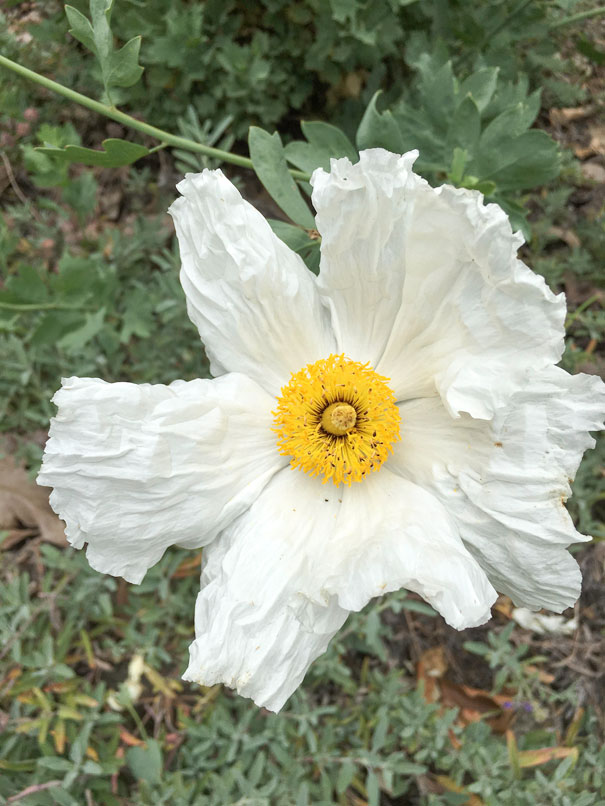
Recent Comments